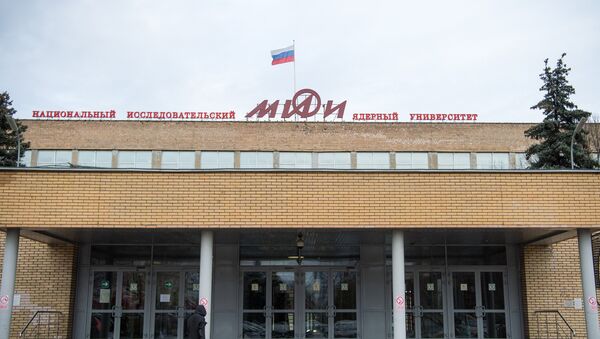The new method expedites the sampling process considerably and reduces cost while using a new compact device. The survey's results are published in the European Journal of Mass Spectrometry.
"The most obvious practical applications for our work show that we can use an extremely compact, high-sensitivity and highly productive device for direct sampling without non-standard analysis that costs less," MEPhI Professor Alexei Sysoyev noted.
The process for analyzing the composition of any matter consists of the following three steps:
— determining the elemental composition and calculating the proportions of chemical elements from Dmitri Mendeleev's Periodic Table of Elements in a sample;
— molecular sampling;
— isotope sampling.
This refers only to elemental sampling and analysis.
Traditional methods of elemental sampling call for meticulously preparing various samples. Solid-state samples, including minerals, have to be dissolved; and this time-consuming process increases the chances for admixtures and contamination.
In addition to lengthy sample preparations, it is necessary to compare them with standard samples to avoid mistakes while sampling a substance. Any sample that is being studied can contain admixtures of other minerals. Therefore standard samples are acquired for mass-spectrometry purposes, and this increases sampling costs. Experts know the composition of these expensive samples. For example, there are standard bronze alloys with a certain amount of admixtures.
READ MORE: Russian Physicists Upgrade Nano-Components of Flexible Electronic Devices
Scientists from the National Research Nuclear University MEPhI have suggested a new method for developing a laser mass-spectrometer with wedge-shaped ion mirror-reflectors. This versatile method for sampling solid-state materials does not require standard samples.
So-called elemental sampling without standard samples makes it possible to directly determine the elemental composition of samples. While determining elemental concentrations in samples, scientists no longer have to simultaneously analyze standard samples of a known composition.
Other advantages include its ability to analyze all classes of substances, the purity of the method, the possibility of local and layer-by-layer analysis, as well as the absence of cluster ion interference. This analyzer's pulse method combines nicely with a laser source of ions.
READ MORE: Russian Physicists Create First Working Secure Quantum Link Between Two Banks
This method presupposes substantial reductions in the device's costs, and sampling costs are also reduced appreciably. This makes it possible to expand the mass-spectrometry method's potentialities in criminalistics where rapid expert analysis is needed.
The method opens up new prospects in medicine, including areas linked with analyzing micro-elements in human hair and nails. It can more accurately determine the composition of objects being transported across the border at railway stations and airports. It can also more quickly analyze soil samples for correctly assessing the environmental situation in a given area.




